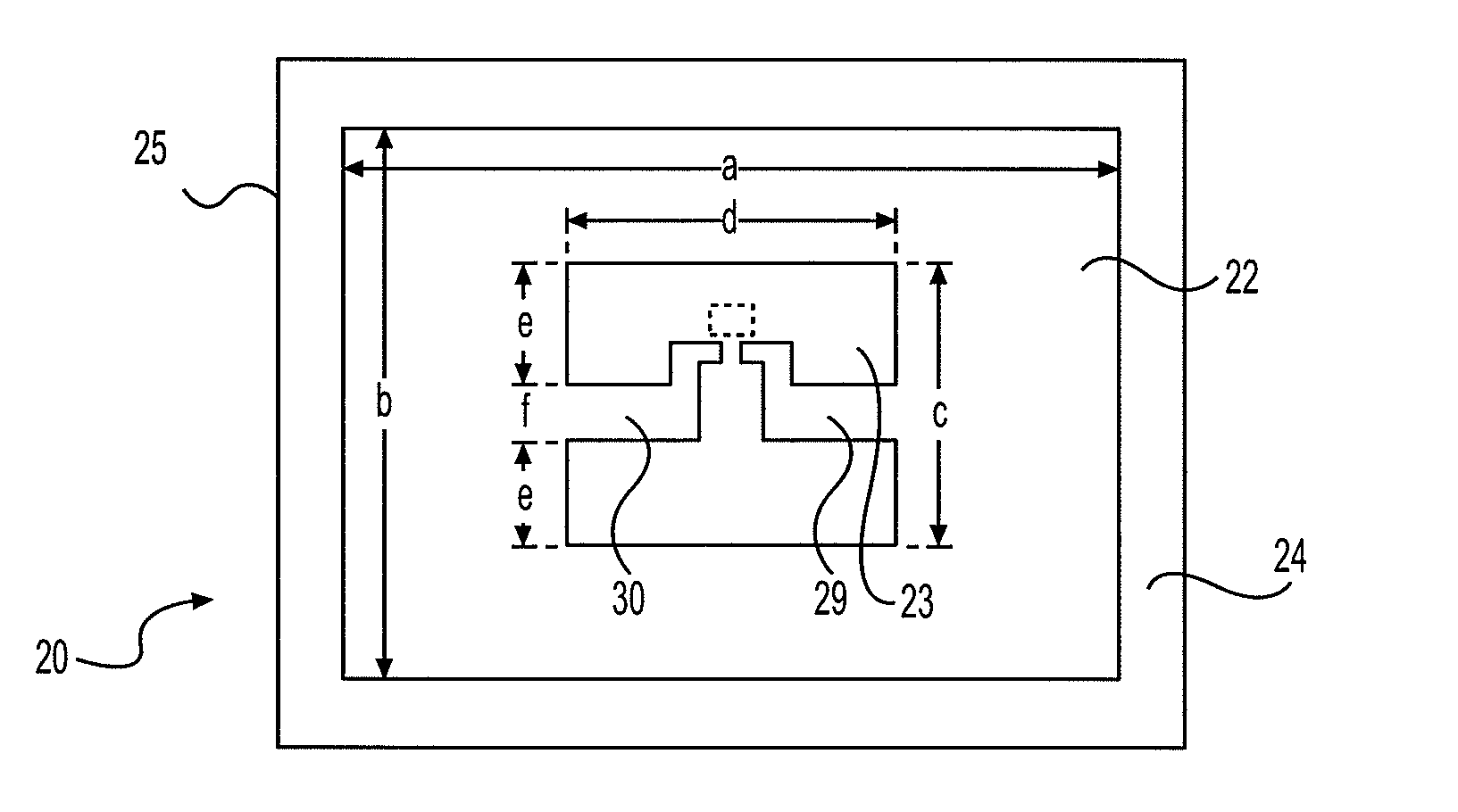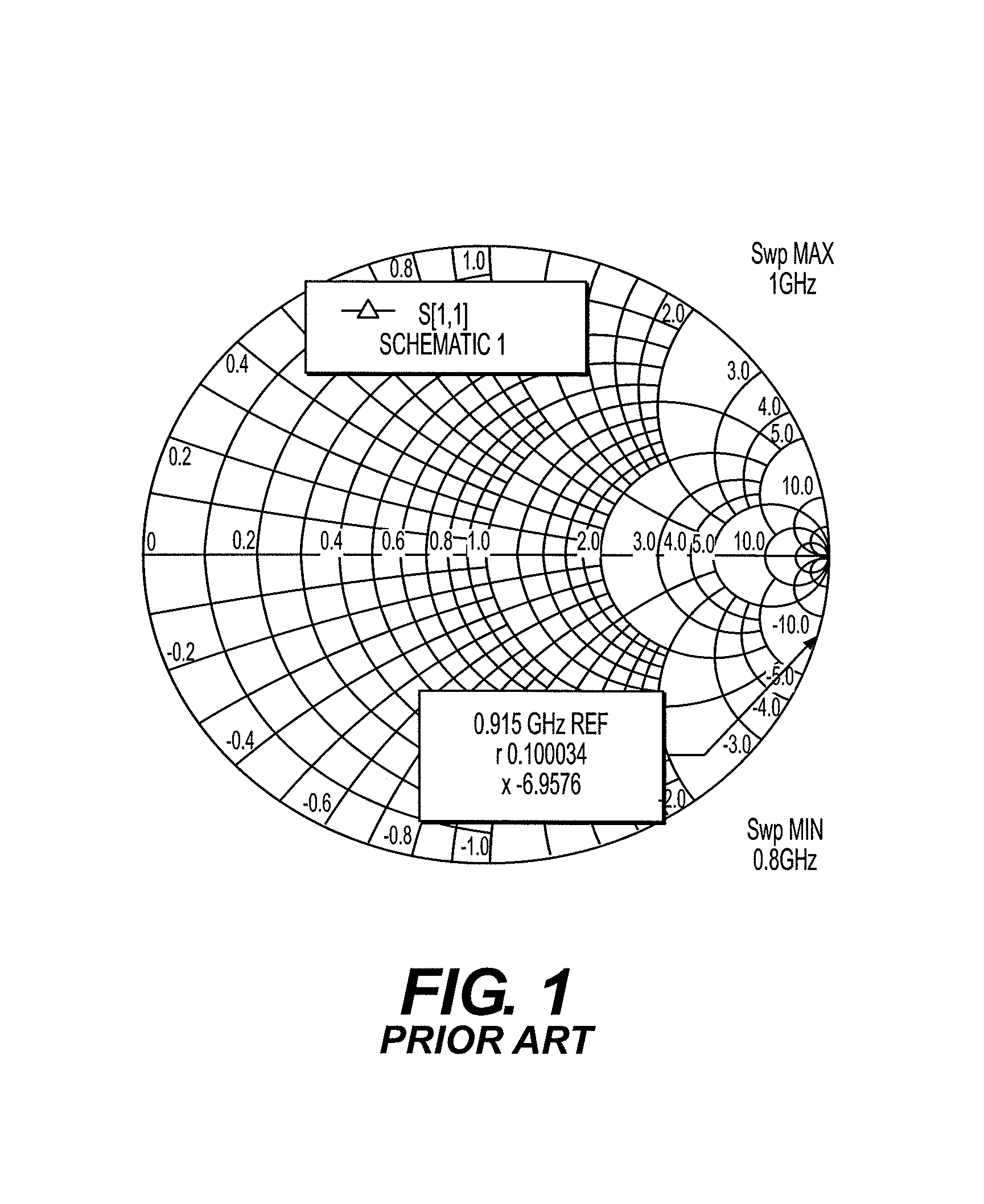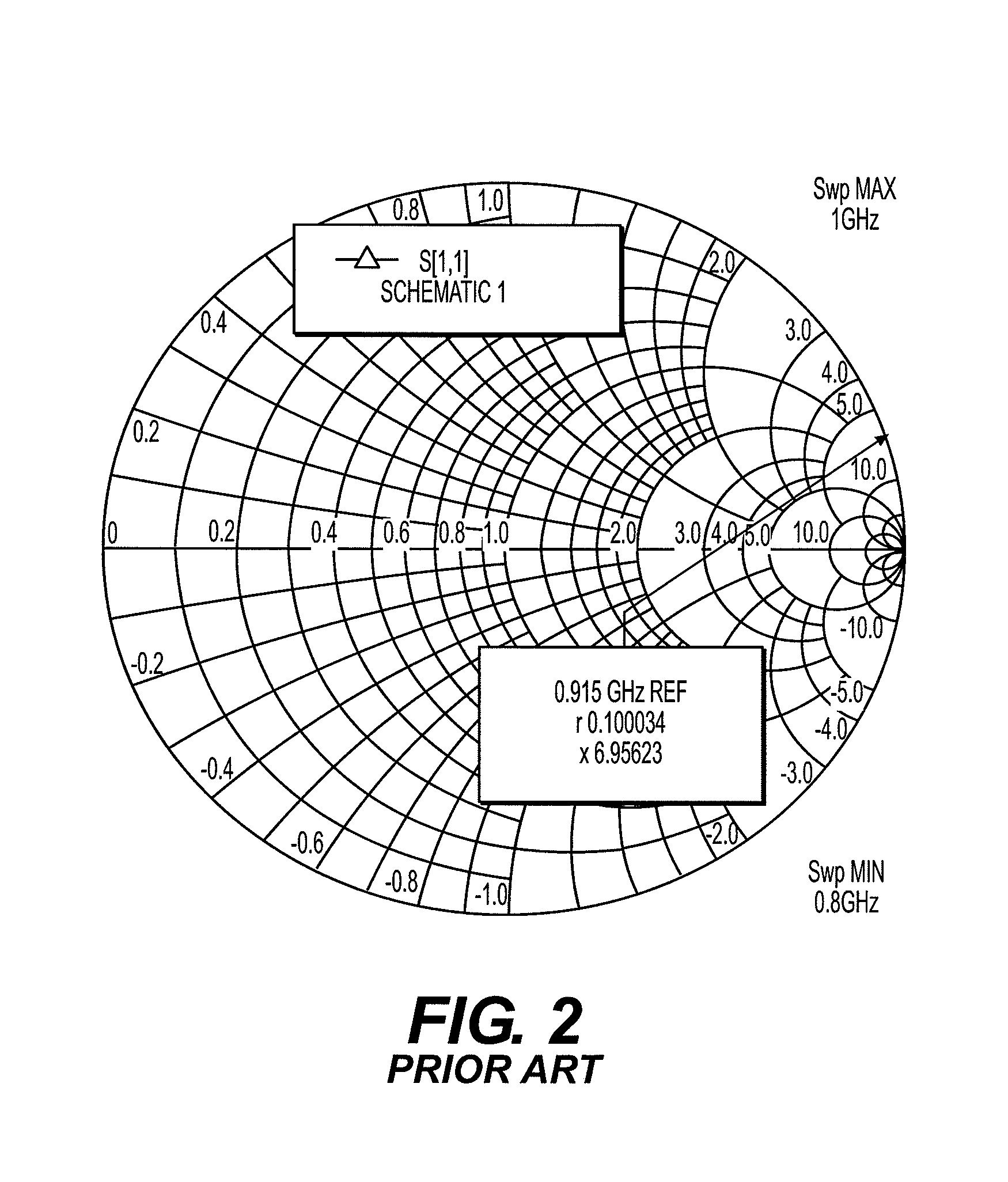RFID tag with small aperture antenna
a technology of rfid tag and antenna, which is applied in the direction of burglar alarm mechanical actuation, burglar alarm by hand-held articles removal, instruments, etc., can solve the problems of limited life and size relative to the active tag, battery itself may be quite small, and not small enough to overcome the size disadvantage, so as to reduce incident rf power requirements, increase the efficiency of antenna and matching elements, and increase the operational range of the tag
- Summary
- Abstract
- Description
- Claims
- Application Information
AI Technical Summary
Benefits of technology
Problems solved by technology
Method used
Image
Examples
Embodiment Construction
[0059]In describing a preferred embodiment of the invention illustrated in the drawings, certain specific terminology will be used for the sake of clarity. However, the invention is not intended to be limited to that specific terminology, and it is to be understood that the terminology includes all technical equivalents that operate in a similar manner to accomplish the same or similar result.
[0060]Reference is now made to FIGS. 5A-5D, which illustrate various views of an exemplary RFID tag 20 of the invention. FIG. 5A is a view without matching circuit elements and RFIC, at one side of a planar passive RFID tag 20 with small aperture (here, slot) antenna element 22 having an aperture 23, at an initial stage of fabrication according to a presently preferred embodiment of the invention. In a presently preferred embodiment, the RFID tag is implemented to be ultimately of sheet sticker-type form intended to be affixed to a surface, preferably the inside surface, of a vehicle's windshie...
PUM
 Login to View More
Login to View More Abstract
Description
Claims
Application Information
 Login to View More
Login to View More - R&D
- Intellectual Property
- Life Sciences
- Materials
- Tech Scout
- Unparalleled Data Quality
- Higher Quality Content
- 60% Fewer Hallucinations
Browse by: Latest US Patents, China's latest patents, Technical Efficacy Thesaurus, Application Domain, Technology Topic, Popular Technical Reports.
© 2025 PatSnap. All rights reserved.Legal|Privacy policy|Modern Slavery Act Transparency Statement|Sitemap|About US| Contact US: help@patsnap.com



